Check out CH Equine’s Facebook Feed
Follow us on social media for inspiration, horse training tips, horse humor, equestrian stories, beautiful horses, and more!
... See MoreSee Less
- likes love haha 49
- Shares: 0
- Comments: 2
2 CommentsComment on Facebook
Testing Your Training
Your training is only as good as what goes with you.
When you leave your familiar arena or step outside your routine, does your horse still feel safe? Can you still trust each other? Remember the last two posts—about being #1 and quietly challenging yourself? Those are the foundation of a horse that can travel well, think clearly, and stay connected no matter where you go.
If your horse can only perform in the comfort of a quiet, familiar arena, then your training has limited value. Real training prepares your horse for life—for new places, new situations, and unexpected challenges. It doesn’t shelter them from stress; it teaches them how to handle it.
Yes, stepping out of your comfort zone can be scary. Many of us have had setbacks from taking on too much before we or our horse were ready. That’s okay. That’s part of learning, too.
But when you can go somewhere new, do something unfamiliar, and still feel connection and communication with your horse—you’re getting somewhere. That’s real training.
... See MoreSee Less

1 CommentsComment on Facebook
Be #1!
Being number one in your horse's life is incredibly important. Why? One word: trust.
But what does it really mean to be your horse’s number one?
It means you’re in charge—not in a forceful or dominating way, but in a responsible, caring way. You are in charge of everything that affects your horse’s physical and mental well-being:
Their safety
Their confidence
Their health
Their comfort
Their emotional security
When your horse believes that you’re always on the lookout—that you’ll alert them to danger, keep them safe, and guide them with fairness—they’ll relax in new environments. When they understand that the work you ask of them helps their body feel better and their mind stay focused, they’ll willingly engage. When they know you’ll be there for them in scary moments, they’ll become braver.
Yes, being number one means setting boundaries and expectations—but those must be fair, clear, and achievable. As your horse learns and grows, your standards can evolve too. But they must always remain fair.
Being #1 isn’t about control. It’s about leadership.
A true number one is trusted, followed, and admired.
A false number one relies on fear and force.
So be the one your horse looks to—not because they have to, but because they want to.
... See MoreSee Less

11 CommentsComment on Facebook
Quietly Challenge Yourself
We need challenges in order to grow—to become stronger, braver, and better. But choosing the right challenges can be tricky. How do we push ourselves without overwhelming ourselves—or our horses?
The answer is to quietly challenge yourself.
A quiet challenge doesn’t always look like much from the outside. To someone watching, it may not even be obvious what you’re working on. And that’s the beauty of it. Quiet challenges are small, intentional efforts—steps that respect where you and your horse are right now. They’re the building blocks of real, lasting progress.
Trying to grow without making mistakes? Impossible. You will make them. But mistakes aren’t failures—they’re lessons. Learning opportunities. Signs that you’re stepping out of your comfort zone.
True failure only comes when you stop trying to do better.
So take the quiet approach. Let your growth come through subtle shifts, steady work, and patient practice. Don’t rush the process. Honor it.
... See MoreSee Less

6 CommentsComment on Facebook
Sit Still!!!
We've all heard the phrase, "Sit still, stop moving so much, sit quietly," but it’s often misunderstood. The idea isn't to be completely motionless—it's about allowing the right kind of movement to flow through you.
The key to “sitting still” is actually movement. When we allow the horse’s rhythm to pass through us, we prevent jerky or abrupt shifts. Rather than trying to resist motion, we move with the horse, creating the illusion of stillness.
A rider who tries to stop all movement becomes stiff, and that rigidity will be thrown off by the horse’s motion. In contrast, a supple body absorbs and flows with the movement, keeping the rider’s seat in perfect harmony with the horse’s rhythm. This fluid connection flows from the seat, down the legs, through the spine, and into the hands.
If there’s any stiffness or misalignment in your seat, legs, or back, the horse’s rhythm won’t be able to pass through your body. This is what makes it difficult to sit still.
The true secret to balance isn’t stillness; it’s moving in such harmony with the horse that it appears as if you’re perfectly still. Find that balance, and let the magic happen.
... See MoreSee Less

24 CommentsComment on Facebook
